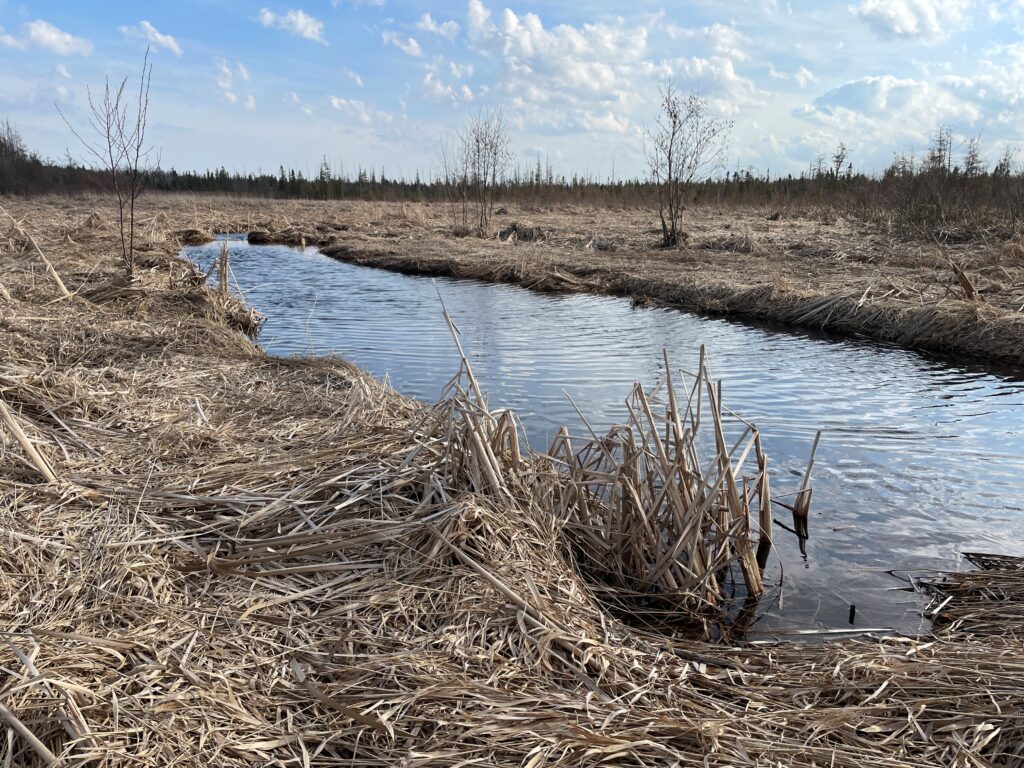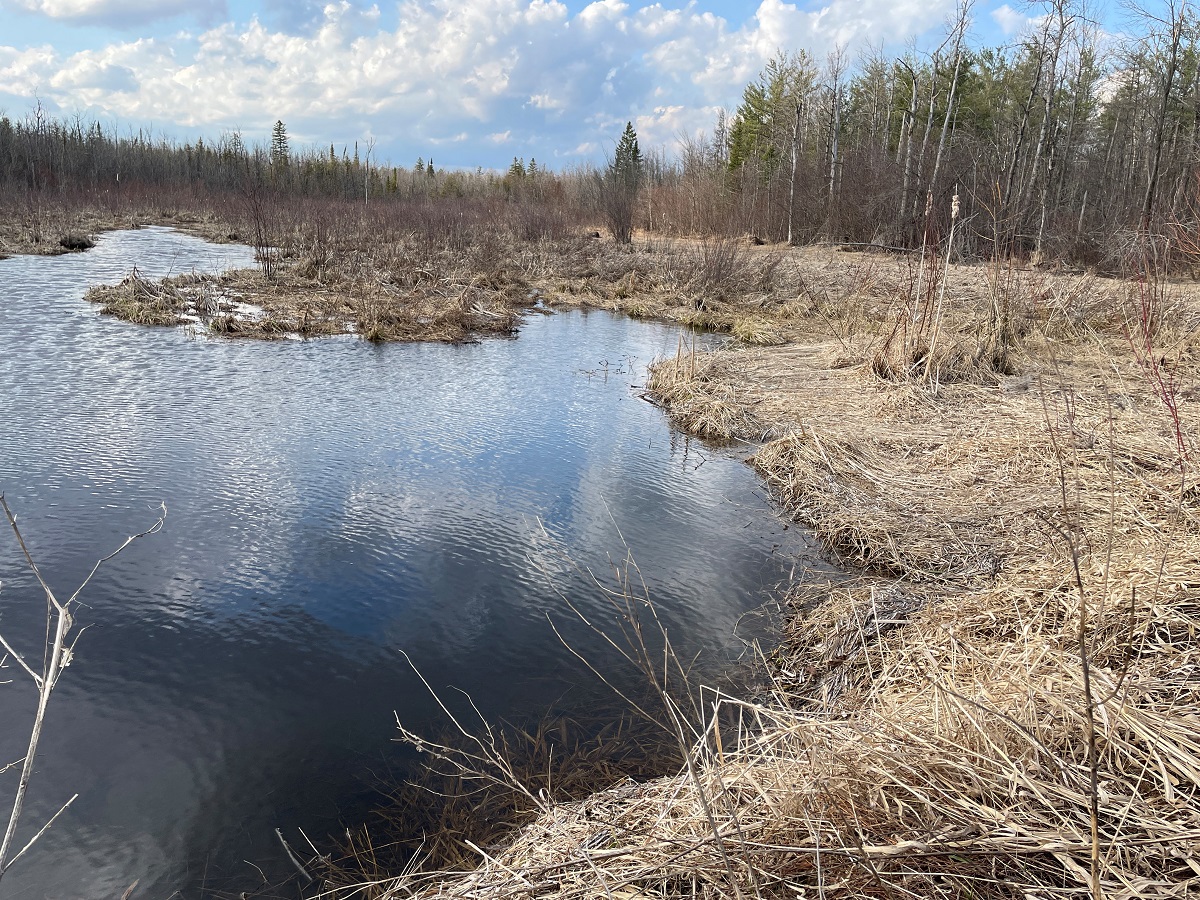This column was originally published in Orillia Matters on April 29, 2025
The Couchiching Conservancy protects nature in your area. Preserving green space is one of the best ways to mitigate climate change and as a staff member, I’m interested in how climate change is affecting local businesses. Perhaps because I feel business owners sometimes have more sway with municipalities than residents. This column has looked at the effects of weather on winterfest events, property insurance brokers and maple syrup producers. In the aftermath of the ice storm, while we scrambled to save basements and roofs, I wondered how Service Master is doing lately.
If you don’t know that name, you’re probably familiar with the trucks. They’re yellow with teal writing and they’re likely on their way to a flooded basement to rip out drywall and set up huge fans to eradicate moisture.
Dwayne and Tanya Frans have owned and operated local Service Masters for almost thirty years. They’re on community boards and are members of Midland rotary and multiple construction associations. They’ve owned Midland Service Master for 27 years, Orillia for 19 and recently purchased the Barrie and Collingwood locations.
This is a tricky subject because previously I’ve talked to proprietors whose companies have been negatively affected by climate change. It’s slightly more awkward to get an owner to talk to you when weather events have increased business. Harder still when that business is a franchise. Franchisees are not allowed to take calls from media. This is how I came to speak to Dan Loosemore, Chief of Sales and Operation for Service Master Canada.
Dan tells me ten years ago the most common call to Service Master was for water damage and that hasn’t changed. Roughly 60% of their calls are about water, with most of the rest about fire and wind. He thinks the growth rate of disaster restoration companies in the last decade is about 10 to 15%. There are 72 Service Master locations across Canada.
In 2016, Canada set an unfortunate record. For the first time, insured damage caused by severe weather surpassed $6 billion. Last year that record was obliterated. The cost of wildfires in Jasper, flooding in the GTA and a host of other weather events was over $8 billion. To put that in perspective, the first decade of this century saw annual costs of $701 million. That’s a twelvefold increase in 15 years.
Celyeste Power, CEO of Insurance Bureau Canada (IBC) says the insurance industry is doing its part and I believe them. No other industry stands to lose more money over climate change than property insurance. Insurance is putting more money into climate change research and solutions than possibly any other industry, but government needs to take action. Craig Stewart, VP of IBC, says this must include land planning use changes that don’t allow building on flood plains, as well as investing in infrastructure that defends against floods and implementing better building codes.
While the provincial government is racing to put up as many homes as possible on as much green space as is available, the industry that pays for property damage is very strongly warning this is part of the problem.

As our area recovers from the recent ice storm and flooding, we have just been given a course in Flood Plains 101. Flood plains are where water goes when it has nowhere else to be absorbed. If that area includes a road or a building, it washes out the asphalt or seeps into the basement. If that area is green space, preferably a forest, wetland or marsh, it slowly reabsorbs back into the earth.
At The Couchiching Conservancy, we noticed some patterns while surveying the nature reserves after the storm. The ten with trails were hit hardest. As trees and branches gathered ice and gained weight, the limbs next to trails fell exponentially more than those in the middle of the forest. With an absence of adjacent trees to bear their weight, trees beside empty spaces toppled. The nature reserves without trails sustained less damage. Where nature was undisturbed, trees held up better. Wetland nature reserves weathered the storm quite well.
The more natural spaces our community has, the better it will fare in the face of these increasingly common disasters. It is that simple.
That’s why Couchiching Conservancy has hundreds of passionate volunteers. They know working together we’re the best chance to protect as much green space as possible for future generations.
This is the 7th in a series of columns by Meg Whitton, formerly of Bounce Radio, now working in conservation at The Couchiching Conservancy. This column looks at how climate change is affecting our area and what we can do about it. If you have a story about how climate change has affected your business, please email Meg at nature@couchconservancy.ca

